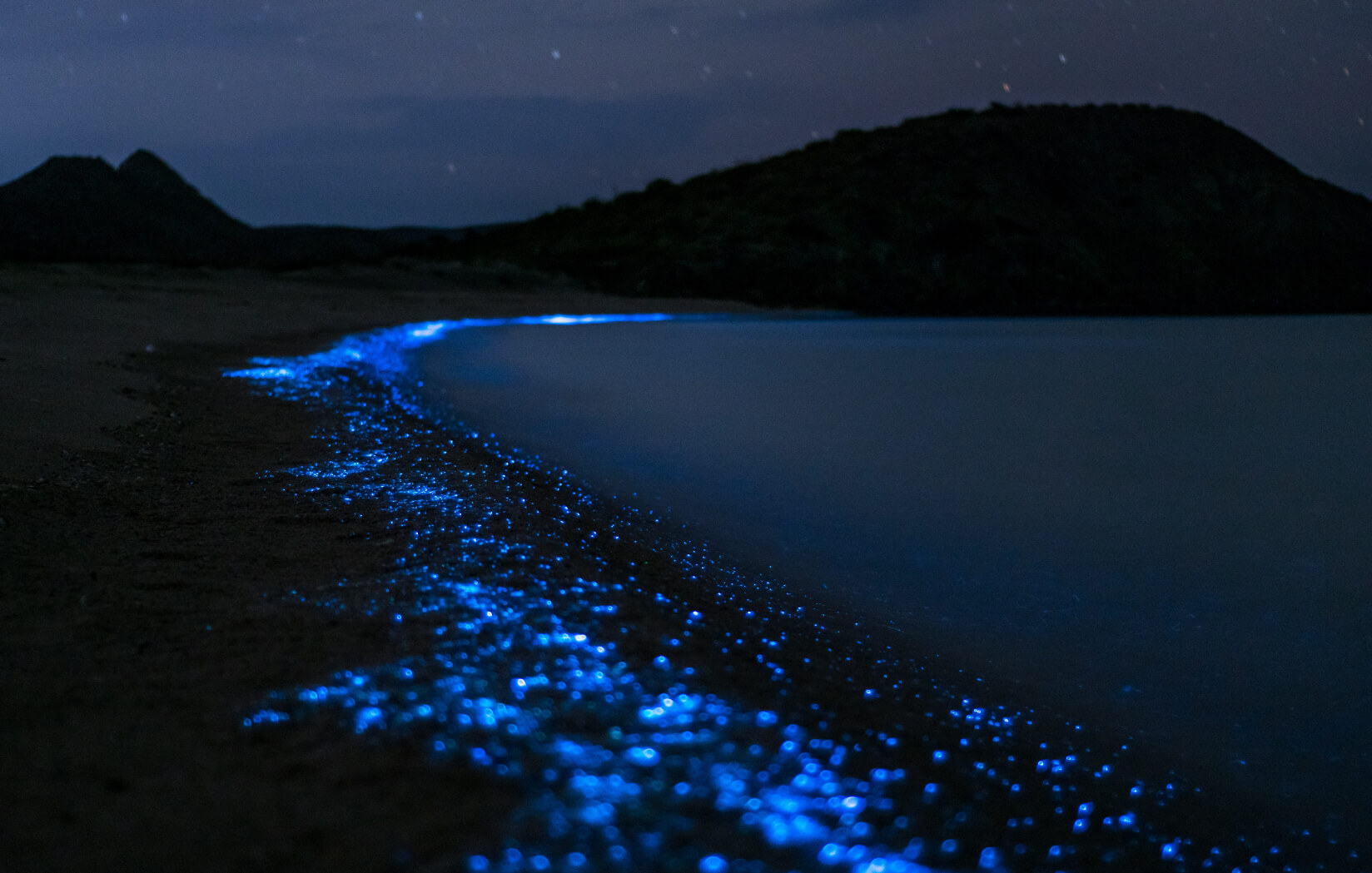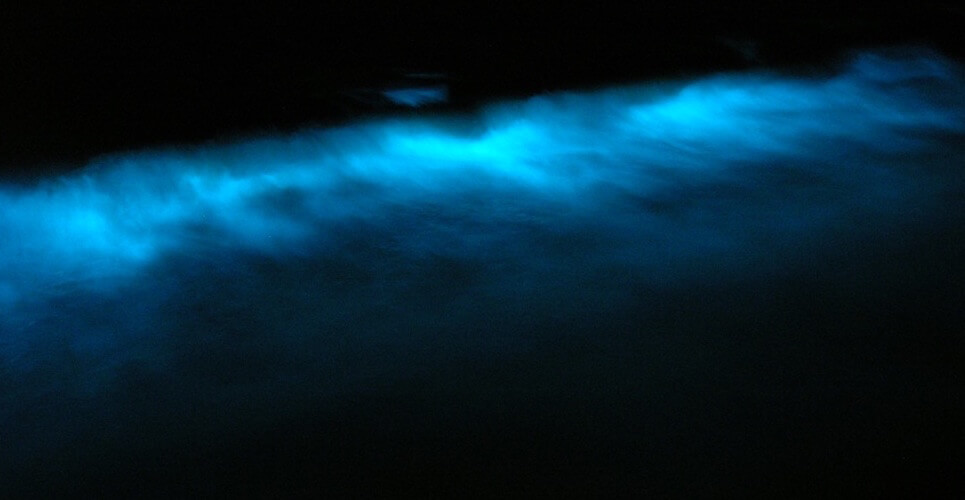It’s 9 in the evening, and a group of ten or so kayakers venture out onto the St. Lawrence with the company Mer et Monde. The sea blends into the night and the water is frigid: nothing here to reassure the faint of heart! But after a few minutes of paddling, a flash of light appears in the furrow of a paddle stroke. Soon the entire surface of the Estuary seems to be flickering. The kayakers have the good fortune to witness a phenomenon that can only be observed at night: bioluminescence.
How does it work?
Despite the awe it can inspire, there is nothing supernatural about bioluminescence! Rather, it is light emitted by living organisms. Surely you are familiar with fireflies? Like most bioluminescent species, they produce light through a biochemical reaction. In the insect’s photophore, an organ dedicated to bioluminescence, there is a protein and an enzyme: luciferin and luciferase, respectively. When these two elements come into contact, the luciferin oxidizes, which is what causes the iridescent light that can be seen on summer evenings.
Bioluminescent species are also plentiful in the ocean: crustaceans, jellyfish, starfish, lanternfish… even giant squid! However, over 90% of them live in the abyss, where they must find their bearings in a world otherwise devoid of light.
Which species are responsible for the bioluminescence that we see on the surface of the St. Lawrence?
An accessible show
Tiny planktonic organisms emit light on the surface. Indeed, certain varieties of phytoplankton or zooplankton such as dinoflagellates or krill are recognized for their ability to produce a green or bluish light. An attentive observer will be able to make out their bioluminescence from shore. But, according to David Bédard, manager and former guide for Mer et Monde, you have to venture out at least 50 metres from the coast, where the currents come up from the depths, to observe it in decent quantities. These currents bring nutrient-rich materials to the surface, which allows planktonic organisms to proliferate. So, when night falls, these areas teeming with life begin to light up.
Twinkle twinkle…
Bioluminescent plankton does not always shine with the same intensity. Another light source, for instance a starry sky or light pollution, can mask its visibility. Conversely, the sparkling of certain species such as dinoflagellates can be magnified by mechanical stimulation. A stronger current or even a soft touch is enough to accelerate the biochemical reaction that triggers their bioluminescence. This is what enables kayakers to create an electric green wake when they guide their paddle through bioluminescent organisms.
A simple movement produces just a brief glow, whereas a more intense stimulation can result in an unforgettable spectacle. For example, thanks to their speed and power, dolphins have already been observed to “light up” while swimming amongst bioluminescent organisms off Newport Beach.
What would happen if a larger animal such as a minke whale surfaced in a bioluminescent area? David Bédard and his team are among the lucky few to have witnessed such a display in the St. Lawrence. In 2015, on an overcast night where the light of the plankton is particularly bright, they hear a spout.
“We couldn’t see it, but the darkness let us imagine that it was not far away. Then, all of a sudden, about 200 m away, the animal poked its head out to feed, and it looked like everything was lighting up. Both its head and the water around it! Never had I seen anything like it!”
This type of event is difficult to capture on video or in photos. But thanks to the stories shared by sailors, scientists and even kayakers, we know that these light shows occur on a nightly basis in the Estuary, both at the surface and deep below.
To learn more
- Bioluminescence: Glowing to Survive (Whales Online, November 12, 2018)







